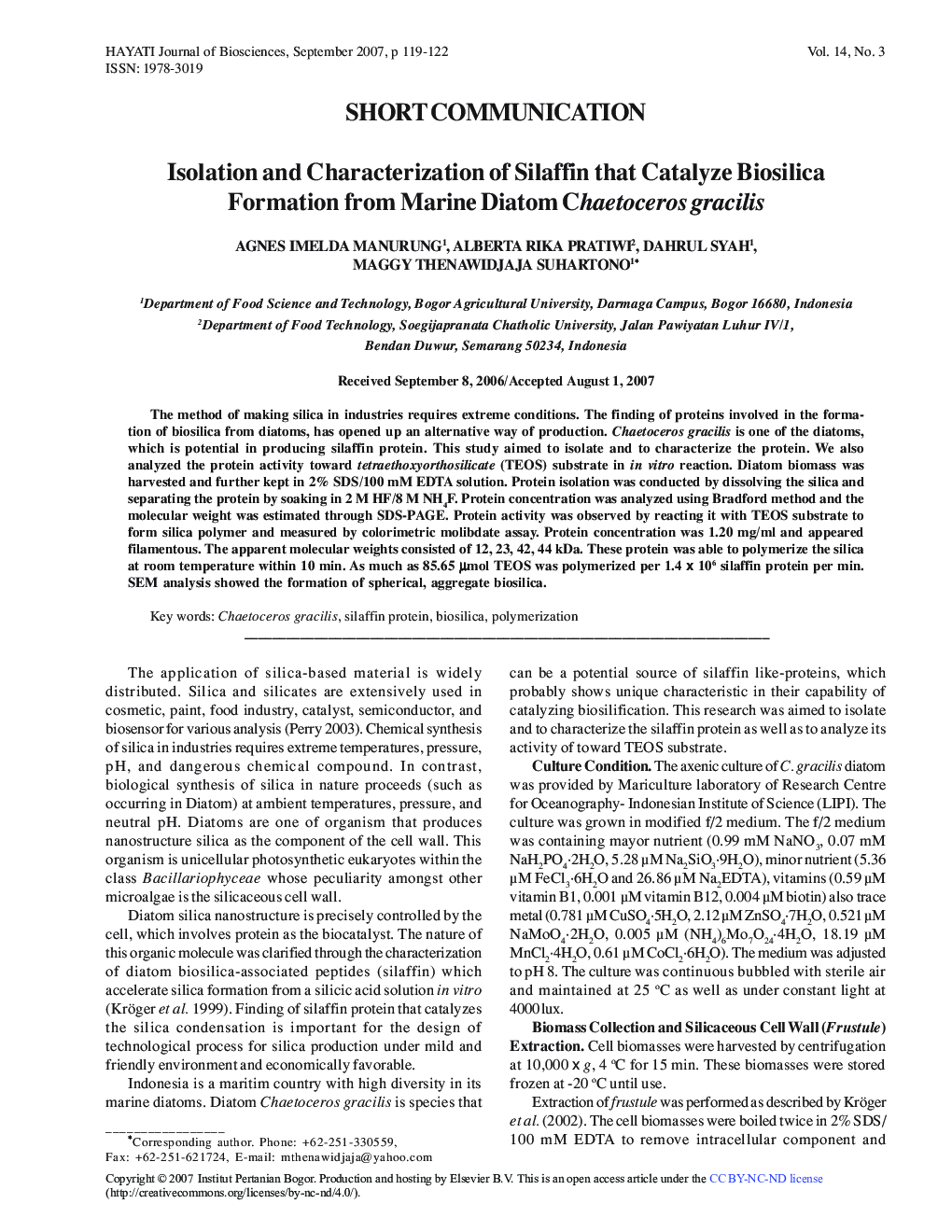| Article ID | Journal | Published Year | Pages | File Type |
|---|---|---|---|---|
| 2086112 | HAYATI Journal of Biosciences | 2007 | 4 Pages |
The method of making silica in industries requires extreme conditions. The finding of proteins involved in the formation of biosilica from diatoms, has opened up an alternative way of production. Chaetoceros gracilis is one of the diatoms, which is potential in producing silaffin protein. This study aimed to isolate and to characterize the protein. We also analyzed the protein activity toward tetraethoxyorthosilicate (TEOS) substrate in in vitro reaction. Diatom biomass was harvested and further kept in 2% SDS/100 mM EDTA solution. Protein isolation was conducted by dissolving the silica and separating the protein by soaking in 2 M HF/8 M NH4F. Protein concentration was analyzed using Bradford method and the molecular weight was estimated through SDS-PAGE. Protein activity was observed by reacting it with TEOS substrate to form silica polymer and measured by colorimetric molibdate assay. Protein concentration was 1.20 mg/ml and appeared filamentous. The apparent molecular weights consisted of 12, 23, 42, 44 kDa. These protein was able to polymerize the silica at room temperature within 10 min. As much as 85.65 μmol TEOS was polymerized per 1.4 × 106 silaffin protein per min. SEM analysis showed the formation of spherical, aggregate biosilica.
